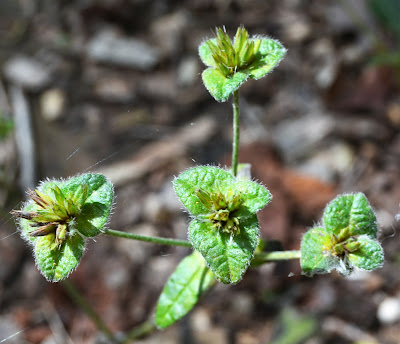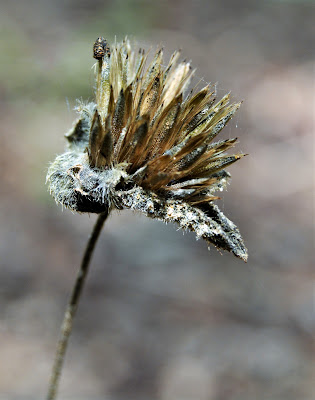Wildflower Wednesday: Elephantopus tomentosus
For this month's Wildflower Wednesday post, I am sharing a plant that occurs naturally on our property [we did not introduce it]. These types of plants are worth celebrating because they teach us about the native landscape where we reside and connect us to our local environment.
[Common] Hairy Elephant's Foot (Elephantopus tomentosus) is a native wildflower that we first found in clearings in our woodland garden. It grows in the pathways, which are fairly compact and dry. Plants often choose where they grow best, so we leave them in their chosen location instead of moving them to the landscaped beds.
Over the years, this wildflower has colonized in dry, woodland areas and even appeared closer to our home in several flowerbeds. The tiny, pale purple, flowers first appear in late summer and continue into mid fall.
A few small flowers emerge at a time from the flower head. To really appreciate them, it is best to get down low and view them at their level.
The petite flowers attract small butterflies, bees, flies and other pollinators. These delicate blooms quietly provide a nectar source for our native insects reminding me that there is much that happens in the ecosystem that goes unnoticed or underappreciated.
 |
| thick headed fly |
Elephantopus tomentosus is classified in the Asteraceae family, commonly referred to as the aster family. The genus name, Elephantopus, comes from the Greek 'elephas' meaning elephant and 'pous' translated as foot. The species name, tomentosus, is Latin for hairy. So hairy elephant's foot becomes its common name.
The large, hairy leaves lay flat on the ground allegedly resembling an elephant's footprint. I think it looks more like an elephant stepped on the plant! The plant's leaves form a basal rosette with different leaf sizes, overlapping around the stems. The leaves are foraged by wildlife.
The flower stalks are bare but small leaf-like bracts appear under the flower heads. These flower heads consist of two to five individual tube flowers. Unlike other composite flowers in this family, these are asymmetrical with the five--pointed lobes of each tube radiating outward.
After blooms have expired, seed clusters begin to form. These clusters dry as the plant goes into dormancy making seeds available to wildlife or dropping to develop into new plants next year.








